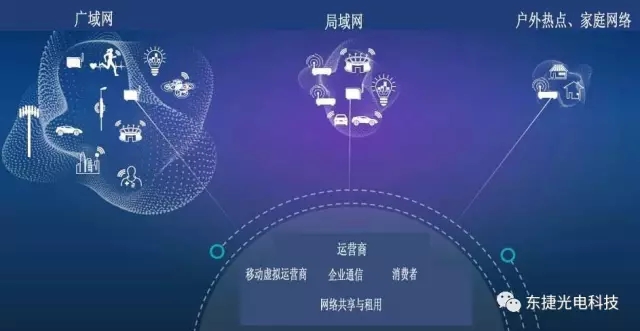发布日期:2017-11-23 查看:0
It is reported that this year's MWC and OFC conference theme is: ready for the upcoming 5G transmission network. The current industry consensus is that 5G has been deployed extensively since 2020. However, 5G NR is still in the early stage of standardization, so the preparation of 5G is also a thorny problem.

With the continuous changes of 5G wireless standards, what measures can the network operators take to lay the foundation for the 5G transmission network? The good news is that, at least, 5G's way to the physical layer is clear: fiber will be the foundation of the 5G network, and centralized RAN (C-RAN) will become the 5G network architecture.
C-RAN is introduced through 4G (business deployment is now expanding), and adds a new transport network segment for mobile networks: go. After using the C-RAN, the radio unit remains in the base station tower, but the baseband processing unit (BBUs) moves from the cell tower to the central office in order to communicate with each other and other components. Using standard CPRI protocol, the distance between base station tower and BBUs can be up to 20 km.
C-RAN has two main points:
1) C-RAN is the transport network architecture needed for 5G, because virtualization of BBUs (Cloud RAN) will become the key component of 5G implementation. In order to extend and realize virtualization, C-RAN architecture is needed immediately;
2) due to the combination of capacity and distance requirements, the trip network will be mainly based on optical fiber.
The testing requirements of the physical layer are also very simple, focusing on testing the fiber characteristics that are critical to any fiber network. That is, there are some differences when preparing 5G data rates and architectures.
attenuation
Attenuation is the decrease of power when optical signal propagates in optical fiber. The common causes of attenuation include poor connector quality, tight fiber bending, faulty optical fiber joints, and the defects of the fiber itself due to the increase of transmission distance. Compared with distributed RAN, C-RAN introduces two important factors that may increase loss: 1) larger fiber transmission distance - the physical isolation distance between remote head and BBUs increases from tens of meters of distributed RAN to 10 km to 20 km;
2) a greater number of connectors in the transmission route. Optical time domain reflectometry (OTDR) is a correct test tool for accurate measurement of attenuation, and should be carried out on any new C-RAN optical fiber installation. If the OTDR point connector has unusually high loss, check the probe to help determine whether the end of the fiber should be cleaned.
Chromatic dispersion and polarization mode dispersion
Dispersion is an extension of the optical pulse and may lead to an increase in bit error rate in optical transmission. The two most important forms are chromatic dispersion (CD) and polarization mode dispersion (PMD). CD is caused by different wavelengths (colors) of light pulses running at different speeds, and PMD is caused by the difference of propagation speed between different polarization states.
At sub-10G rate, the tolerance rates of CD and PMD are very high, but dispersion becomes a problem at 10G and above. This is an important consideration, because the mobile backhaul network can reach 10Gbps data rates (eventually higher).
In addition, distance is also a factor. The test and measurement supplier EXFO recommends dispersion testing over any span of 15 km to 20 km, and tests before commissioning to avoid CD/PMD related failures.
The migration of coherent 100G transmission over remote networks and in metropolitan areas, due to the function of digital signal processing, reduces the issue of chromatic dispersion impairment. However, coherent detection brings some limitations in 10G direct detection systems, such as sensitivity to polarization states (SOP) and rapid changes in PMD. Because SOP and PMD can change within a few microseconds, the coherent receiver must be real-time compensation of PMD and SOP; but if they change too fast, sometimes not, will cause a loss of signal. The best way to prevent SOP and PMD from compensating in coherent receivers is to avoid using fibers with higher PMD, because fast changes in SOP and PMD are more frequent in higher PMD optical fibers.
In short, for the future operators planning 5G, now can take measures at the physical layer, the fiber extended to its cell site, in order to look forward to the centralized RAN architecture needs in the higher level. From the point of view of physical layer testing, this method is very simple, and will focus on the optical fiber characteristics.